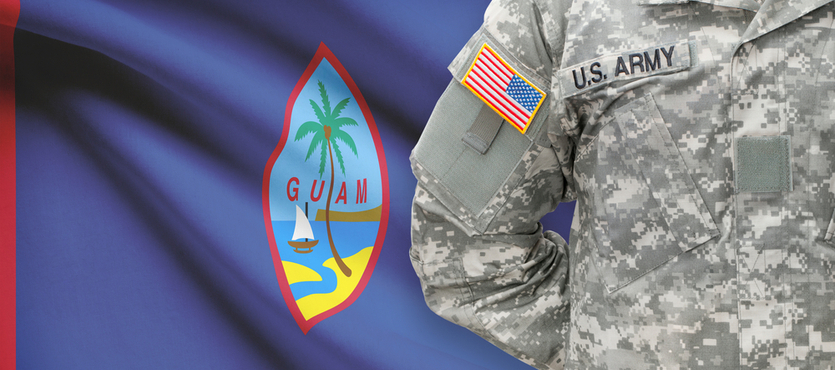Based on a comprehensive, nine-month review, U.S. President Joe Biden has authorized significant upgrades to American military facilities throughout the Indo-Pacific region.
In light of rising tensions, mostly over Taiwan, China has been Biden’s main foreign policy priority. As part of the Guam expansions, the U.S. will also upgrade military facilities in Australia. Additionally, a DoD official said the Americans will seek “greater regional access for military partnership activities.” Part of this push includes reducing troop strength elsewhere in the world and redeploying it to this area of the globe.
The DoD said the expansion was part of an international process that included about 75 consultations with foreign governments.
What’s Going on in Guam
During the Vietnam War, American forces often relied on firebases. They effectively supported field infantry units that were outside their normal support areas. Roughly two dozen firebases were scattered throughout South Vietnam. Originally, firebases were little more than artillery positions. As the war progressed, FSBs (Fire Support Bases) became increasingly sophisticated. By the early 1970s, the typical FSB had at least two helicopter landing pads, a field hospital, a tactical bunker, and a large infantry garrison.
This concept was so successful that the Americans copied it in future conflicts, most notably the Afghanistan War.
Today, tensions are high between the United States and China. The Americans recently announced a partial boycott of the 2022 Winter Olympics in Beijing. A full boycott might not be far away. If these tensions escalate to armed conflict, Guam will most likely be a key firebase in the conflict. So, the island many Americans probably could not find on a map must be up to the task.
Guam is no stranger to such a role. In the 1800s, when it was part of the Spanish East Indies, the Pacific island was an important stopover in the Mexico-to-Manilla Spanish galleon run. Some forts the Spanish built are still around today. The island fell into American hands after the brief and controversial Spanish-American War.
Things were pretty quiet on the island until December 1941. Japanese forces invaded and occupied Guam as part of a larger push that included operations in Southeast Asia and the attack on Pearl Harbor. For the next several years, Guamanians endured a rather brutal Japanese occupation. American forces liberated the island in July 1944, as the U.S. developed staging areas for an attack on Japan’s home islands. That attack ultimately proved unnecessary, as the war ended abruptly in September 1945.
As a footnote, Shōichi Yokoi, one of the last holdouts from the Japanese Imperial Army, finally surrendered to U.S. forces on Guam in 1972. “It is with much embarrassment that I return,” he remarked after his plane touched down in Japan. Later, as he visited the Imperial Palace, he told Emperor Hirohito “I deeply regret that I could not serve you well. The world has certainly changed, but my determination to serve you will never change.” In return, the Emperor awarded him a tiny pension along with roughly $300 in back pay.
Contractors in Guam
Guam was also a staging area during the Vietnam War. Most of the island’s military facilities date back to this period.
Renovating and expanding the island’s military facilities is the biggest priority on Guam. At the same time, construction crews must be mindful of the island’s history. Private contractors are well-suited to meet both these objectives.
Most planes and ships are much bigger and faster than they were in the late 1960s. Runways must be lengthened and harbor facilities must be expanded. Aging barracks need renovation and expansion as well. Guam is extremely isolated, so maintaining morale could be a problem. It is easier to keep spirits high if the barracks and other facilities are new and modern.
Usually, the DoD assigns contractors to these jobs. Usually, the Seabees and other such groups are combat engineers and builders. They work under fire. So, the DoD does not want to waste these specialized assets on relatively routine construction projects.
Today’s ships, planes, and other military hardware is also much more sophisticated than it was 50 years ago. Contractors are well-positioned to maintain such equipment. In many cases, they worked at the firms which developed and built this hardware.
Guam has a very rich history. Chamorus, who are related to the Polynesians, lived on Guam as early as 1,000 B.C. Many Chamorran artifacts and burial grounds remain on the island. Construction crews must be very respectful of such finds and follow strict protocols. Contractors usually have better connections with the community than military workers. In many cases, private contractors use local workers. So, the connection is even stronger.
Injury Compensation Available
Construction work is one of the most dangerous occupations in the world. These hazards are more acute in remote places like Guam. Many island medical facilities are little more than first-aid stations.
Trauma injuries plague many construction sites. That is especially true in places like Guam which are not under the watchful eye of the Occupational Safety and Health Administration and other agencies. The most common trauma injuries at construction sites are:
- Falls,
- Struck by (usually a dropped object),
- Caught between (usually a worker “caught between” a motor vehicle and a fixed object), and
- Electrocutions.
Common occupational diseases include toxic exposure and repetitive stress injuries.
The Defense Base Act pays medical bills and replaces lost wages in these situations. Generally, DBA insurance covers all reasonably necessary medical bills. Additionally, most victims receive two-thirds of their average weekly wages until they can return to work. These benefits are available even if the victim is partially at fault, or mostly at fault, for the injury.
For more information about DBA procedure, contact Barnett, Lerner, Karsen, Frankel & Castro, P.A.

